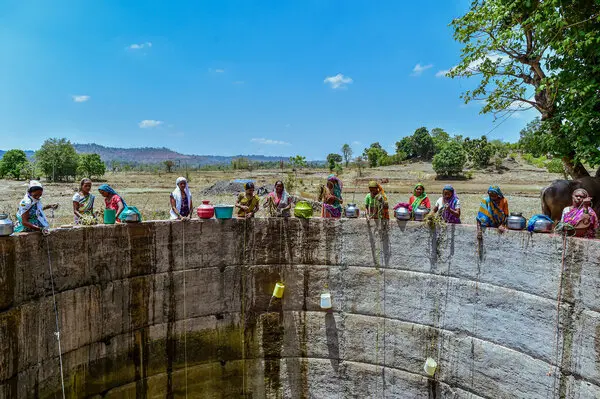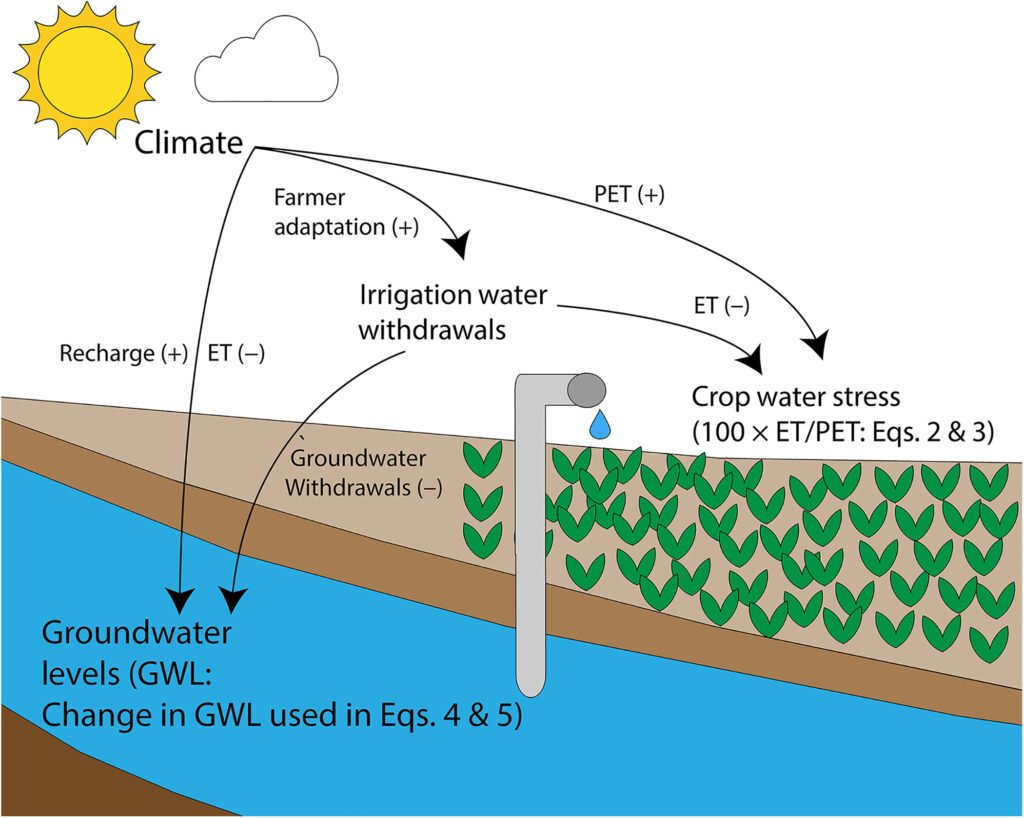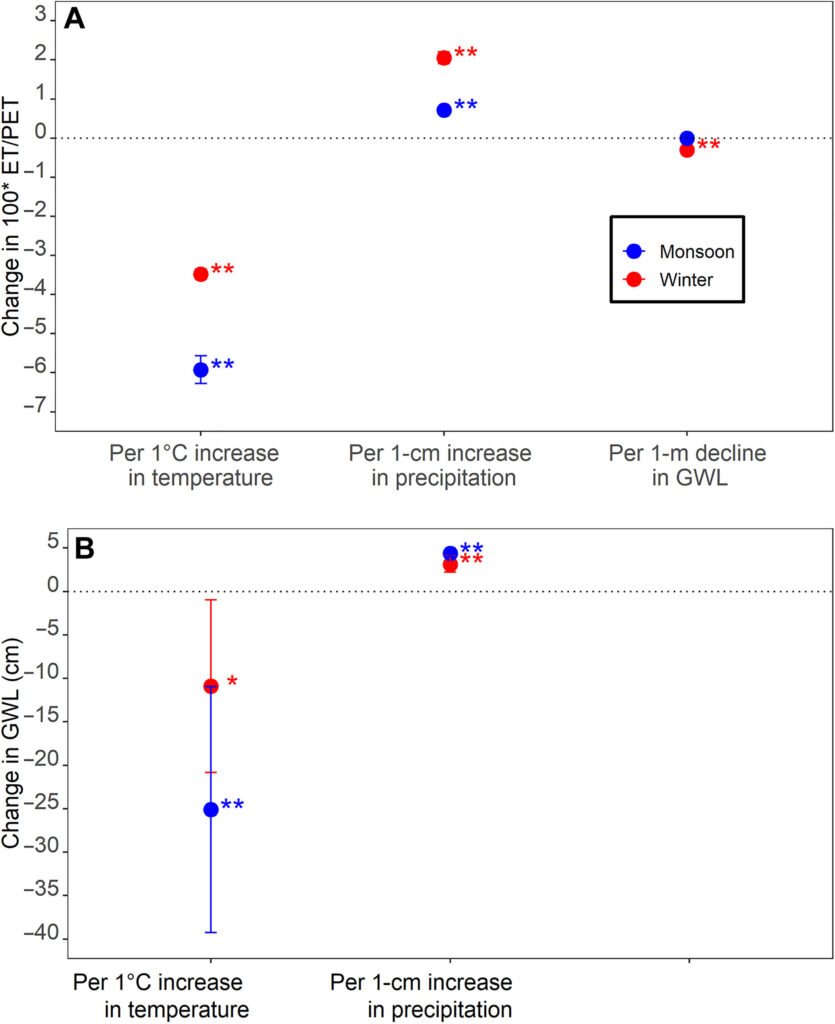Climate change could cause India to use up its groundwater much faster in the coming decades. It already pumps more underground water than any other country, mostly to irrigate staple crops like wheat, rice and maize. But hotter temperatures are drying out fields and reducing the amount of water that soaks into the ground and replenishes aquifers.

Unless India takes steps to improve water efficiency, its groundwater supplies could shrink three times faster than they are now between 2041 and 2080.
Groundwater is essential for farming in India, providing 60% of all irrigation. But farmers in some parts of the country are already starting to deplete aquifers, which can take centuries to refill. India also doesn’t have the dams and other infrastructure needed to significantly increase its river-fed irrigation.

So, the researchers started by exploring how groundwater levels, climate, and crop water stress in India were connected from 2004 to 2013. Then, they tried to predict how groundwater use could change due to three main effects of global warming: more evaporation, heavier rainfall in the summer monsoon, and less rain in winter.
The researchers discovered that the extra rain in summer might help replenish aquifers, but it won’t be sufficient to counterbalance the increased evaporation caused by warmer temperatures and the greater need for irrigation in dry winters.

India’s groundwater overuse has been really bad in Punjab and Haryana, especially in the northwestern breadbasket states. However, according to the researchers, by 2050, the southwest of the country might also start facing problems with their water supply because the aquifers over there are made of hard rock and so can’t hold as much water as the ones in other places.
Reference- Science Advances, National Geographic, Down To Earth, The New York Times






